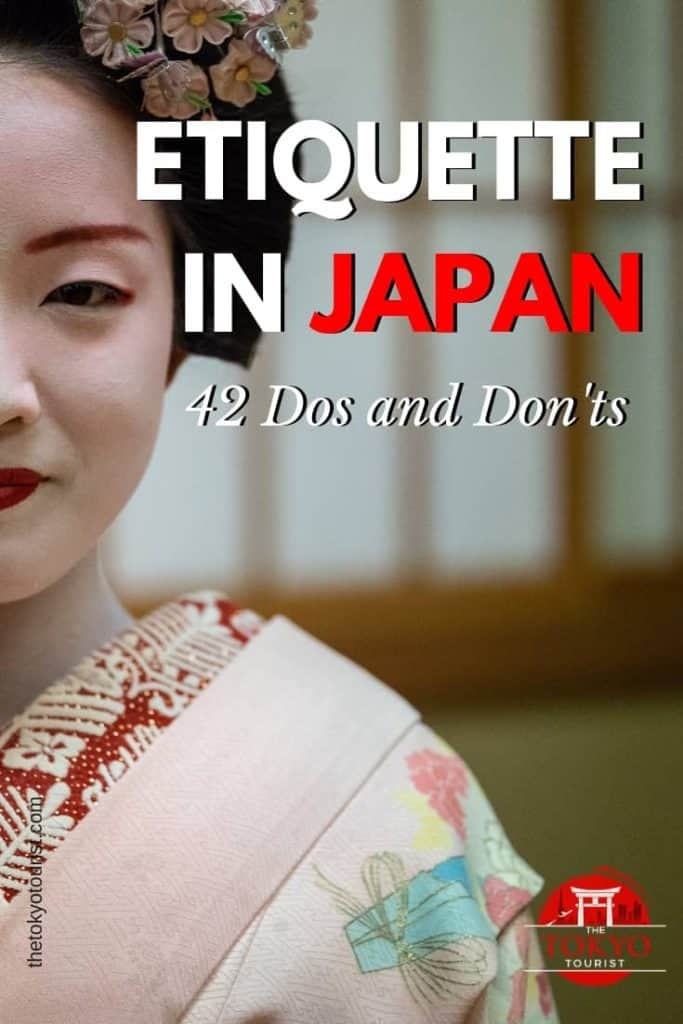Deprecated: mb_convert_encoding(): Handling HTML entities via mbstring is deprecated; use htmlspecialchars, htmlentities, or mb_encode_numericentity/mb_decode_numericentity instead in /home2/thetoky7/public_html/wp-content/themes/acabado/functions.php on line 2119
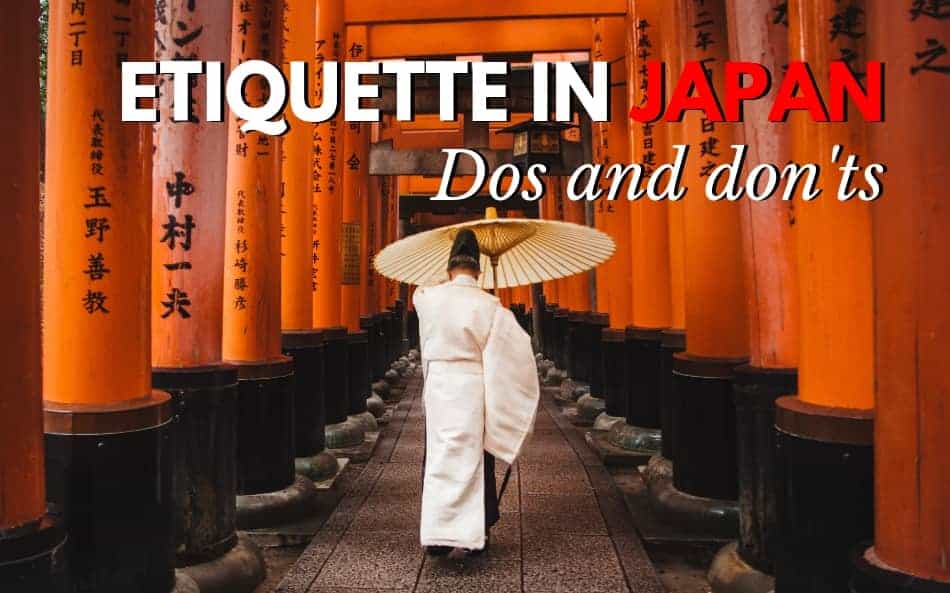
When you visit another country for the first time, the experience can be like living under a whole new set of rules. You have to follow certain etiquette to avoid offending the locals and having a poor traveling experience. If you have a trip to Japan in the works, you may wonder, which etiquette rules should you know?
In Japan, you can offer handshakes upon meeting, but not kisses or hugs. You should also bow. It’s important to respect personal space and nod along during conversations to show you’re listening.
Those are just some general etiquette rules. What if you’re traveling to shrines, riding public transportation, or eating at a restaurant in Japan? How should you behave? In this article, I’ll cover etiquette dos and don’ts for all sorts of activities in this fascinating country.
Shrine Etiquette
When you visit a shrine, you can pray. Doing so is called oamiri. Obviously, you don’t have to pray if you’re not comfortable; you can just as easily visit to see the amazing architecture. No matter your reasons, when you go to a shrine, what should you do? What should you avoid? I’ll tell you.
DO Bow Upon the Torii Gates
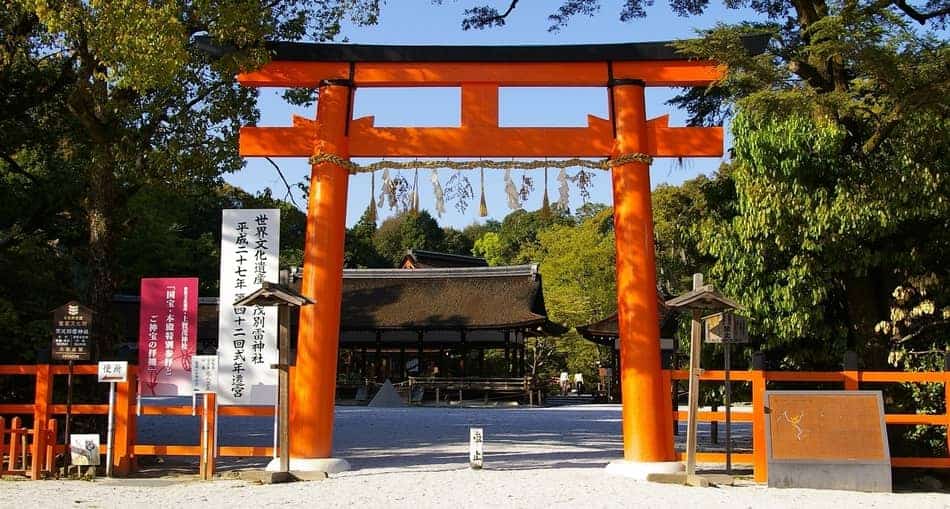
Most shrines will have torii gates. You can’t miss these. They’re often red with a pronounced design. Here’s one.
You’ll find torii gates across Japan. When you come upon one, take a moment to bow. Don’t make this a pronounced gesture. Just a little bow will do. You’re showing respect this way. Now you can proceed through the shrine.
DON’T Go Through the Middle Path
Crossing beneath the torii gates to the central path on the way to the shrine might seem like a good idea. It isn’t. In Japan, only gods can use that path. That’s why you won’t see anyone else on it. Make sure you walk along the shrine’s side paths. You’re in the clear that way.
DO Purify Yourself If You Feel Comfortable
Upon entering the shrine, you might see a chozuya. Japanese people use this basin for purification. If you want to, you can do the same.
You’ll want to grab the ladle first, filling it to the brim with water. Do so slowly so you don’t spill. Next, cover your left hand with water. Then, repeat again for the other hand.
Move the ladle back to your right hand. Take some water into your left hand, cupping it so none leaks. Then put that hand to your mouth. Now you’ve cleansed your mouth. Never drink from the ladle or the basin, as that’s offensive.
To finish this ritual, move the ladle at an angle so the water can move along the handle and clean it for the next person. Then replace it in the basin and move on.
DON’T Forget to Put a Coin in the Box and Ring the Bell
Once you’re done with the cleansing part of your shrine visit, you’ll probably see a box. Here, you should put a coin in. However much money you have to give is sufficient, so don’t feel the need to add a large sum to impress anyone. It won’t work.
While some say using a five-yen coin could improve your chances of finding love, this is just an old myth. The reason it’s perpetuated? It turns out the term for a five-yen coin in Japanese, go-en, has a similar pronunciation to the Japanese word for “relationship.” That doesn’t mean you can’t use a five-yen coin anyway.
Some shrines have bells, but not all. If your shrine does, then you can ring it. Do this no more than three times. By ringing the bell, you notify the gods of your presence.
DO Finish by Bowing and Clapping
Before you leave the shrine, make sure you bow after you’re done with the bell. This time, you do want to do a more pronounced bow. Turn your body at a sharp downward angle, about 90 degrees. Do this two times.
Then, you should clap. Do this two times as well. Your left hand should be more pronounced than your right as you clap. Finally, bow one more time, again at a 90-degree angle. Then you can leave.
Are you staying in Tokyo and want to visit all the beautiful temples in Kyoto? This is the best and cheapest way to get there!
Cab Etiquette

While many Japanese residents rely on public transport, you might hail a cab to get around Tokyo and other parts of the country. How do you ride in a cab while respecting etiquette rules? Let’s go over it now.
DO Use Taxi Stands
Taxi stands exist for a reason. If you spot one and you want a cab, wait there. It will come eventually. If you can’t stand the wait, you can always use a phone app to hail a vehicle.
DON’T Flag Down a Cab When It’s Not Safe
Can’t find any taxi stands? No problem. You can wave down taxi drivers, but don’t be surprised if they don’t always stop. They’ll only pull over if they can do so safely. Otherwise, they’ll ignore you. Don’t endanger the lives of others for a cab ride. Play it safe and smart.
DO Look at the Car Sticker for Payment Options
Only have cash on you? Do you have an IC card and wonder if you can pay with that? Before climbing in the vehicle, make sure you check the sticker on the cab door. There, you should see all the payment options. Most times, you can use cash, as well as IC cards and credit cards. Still, don’t ignore the sticker. You don’t want to get in the vehicle and try to pay with something the driver doesn’t accept.
DON’T Tip
Here’s one to remember, especially coming from the United States. You should not tip your driver. Trying to do so will create a very awkward, uncomfortable moment.
Train/Bus Etiquette

If you’re traveling through Japan, you’ll almost certainly use public transportation like a train, subway, or bus at some point. Knowing how to behave on these vehicles will make traveling a seamless, smooth process.
And by the way, if you’re going to Japan and want to travel around to see the country, you are probably wandering if you should get a
Japan Rail Pass. If you need help deciding read this article: Is a Japan Rail Pass Worth it? (SPOILER: It is!)
DO Stick to Train Cars You’re Allowed On
Although it varies, some trains may only allow women. If you see a pink marking on the train platform, that means men cannot ride on these trains unless it’s before or after working hours (nine to five). These trains got implemented to cut down on inappropriate behavior towards women.
Here’s how to tell if a train only allows women onboard.
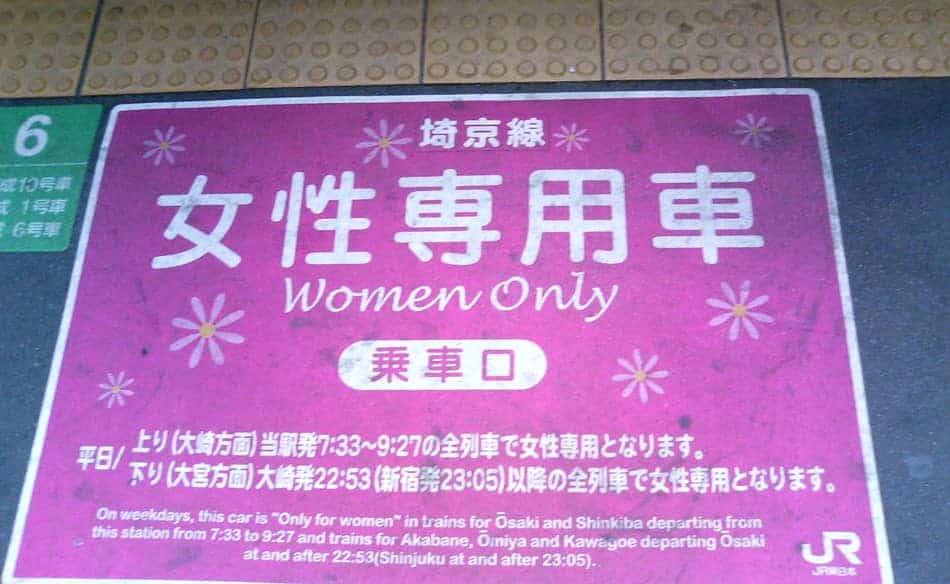
DON’T Get Pushy
While the Japanese generally prefer personal space, that rule doesn’t apply on public transportation like trains and subways. If you’re riding during rush hour or early on a weekday morning, expect the train to be packed. If you’re claustrophobic, maybe travel during less popular times.
DO Mute Your Phone
Either turn your phone volume all the way down or put your smartphone on vibrate while you’re on the train. You can even turn the phone off if you can live for a while without it. If your phone starts ringing in the middle of a crowded train and you answer it, you’ll break some pretty important etiquette rules.
DON’T Have Loud Conversations
Speaking of talking, while it’s not prohibited, train riders prefer you talk quietly. Please follow the rules.
Restaurant Etiquette
You’ve gotta eat. That means that, at some point on your travels, you’ll dine at a Japanese restaurant or several. How do you avoid embarrassing yourself and your guests when at one of these establishments? Just follow these etiquette rules.
What’s the weird Japanese table charge? Read all about Otoshi here!
DO Sit the Right Way
While it varies from restaurant to restaurant, some establishments have dining tables quite low to the ground. That means you’ll have to sit on a tatami mat rather than in a chair. Women should move both legs together and off to the side when dining informally. Men can cross their legs, but women should not. If it’s a formal situation, then kneel, aka seiza.
DON’T Forget to Honor Your Main Guest
The main guest or person of the greatest importance gets their own honor or kamiza. They shouldn’t sit near the entrance, but rather opposite it. The only time that’s not true is if the restaurant has a recessed area or tokonoma. Then your guest should sit near this.
DO Use the Towel, but Not on Your Face
Oshibori or steamed towels help you get clean before dining. That said, you should only use them on your hands, not your face or any other parts of your body.
DON’T Eat or Drink Before You’re Allowed To
Practicing gratitude before and after a meal matters a lot in Japanese culture. You cannot and should not eat before the table expresses its gratitude. Often, the waitress or a guest will indicate when it’s time to eat.
The same applies for drinking. There’s a salute, known as kampaii, that guests will use. Only then can you drink. Also, make sure you hold your glass the right way. If you’re not the main guest and you’re a man, then keep your hand under your glass. Women usually do this, but men of lesser roles do so as well to show respect.
Need a refill? Make sure someone else pours your drink for you every time.
DO Know Basic Dining Rules
As you go through all the courses in a Japanese meal, here’s how to handle each one:
- When using a bowl, grab it with a single hand. Then, bring the bowl to the mouth. Don’t keep it on the table.
- As you eat, do so in single bites. It’s not appropriate to cut or bite pieces of food.
- Never put the food higher than your mouth. If you drop food, don’t try to grab it with your hands.
- When eating soup, refrain from using a spoon. You’ll want to enjoy the soup with chopsticks instead.
- Surprisingly, you can slurp without offending anyone.
- If you have clams or any other food with shells, keep them in the same bowl they came in.
- Never combine soy sauce and wasabi in the same bowl. Also, always make sure there’s some soy sauce leftover, even if it’s just a touch.
- If the guest offers a tea ceremony as part of the meal, prepare to take your shoes off. Don’t talk either.
DON’T Leave Your Chopsticks Willy-Nilly
If you don’t know how to properly use chopsticks, make sure you practice. Don’t linger near food with your chopsticks, especially communal food. Know what you want to eat and grab it.
You have a chopstick stand, known as a hashioki,at your table. Use it. You shouldn’t have conversations while holding chopsticks. You also don’t want to put the chopsticks standing up in a bowl. This has funeral connotations to the Japanese, so you will upset your dinner guests.
DO Indicate You’re Done Eating
After enjoying a delicious meal, clean up after yourself as best you can. Yes, even at a restaurant. Make sure everything’s as close to being where it originally was.
DON’T Tip
Once again, don’t tip at restaurants. You also shouldn’t have to pay for dinner or another meal if you didn’t invite everyone out.
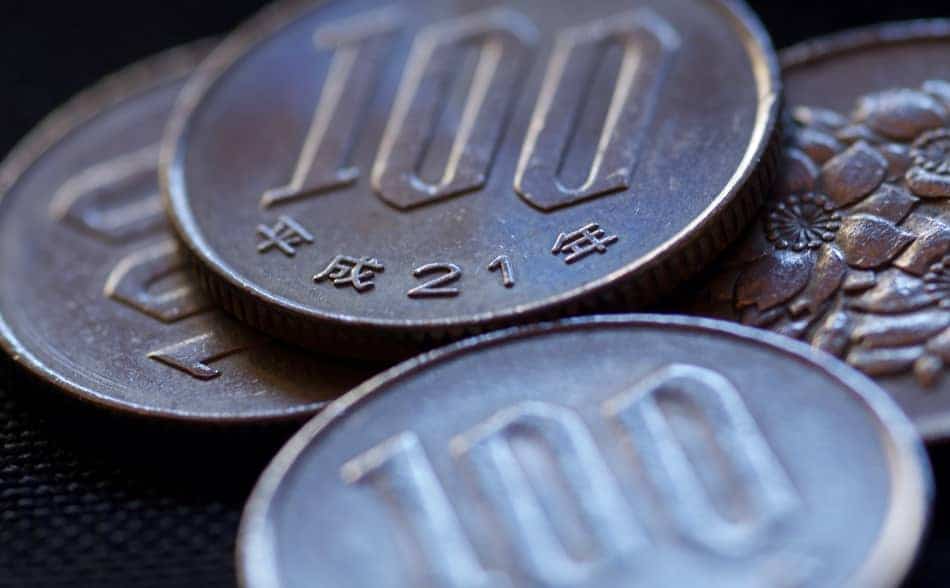
Street Etiquette
Whether you’re strolling through Tokyo, Roppongi, or any of the other beauteous cities and areas across Japan, make sure you keep these street etiquette rules in mind.
DO Know Some Japanese
You can’t expect everyone in Japan to speak English. At hotels and in cabs, the staff might have a decent grasp on the language. Considering you’re traveling to a place where everyone speaks Japanese, you should learn some of the language yourself.
Even if you just master a few basic phrases, that’s better than nothing.
DON’T Leave Litter and Messes on the Streets
Most Japanese streets don’t have trash cans and bins like you’d see in the US. This is to keep the country clean. If you have trash, you might want to bring a plastic shopping bag with you for keeping it. Otherwise, you’ll have to carry it on your person for quite a while.
Never leave litter on the streets.
DO Finish Eating and Drinking in a Restaurant or Other Establishment
Since you’re not permitted to bring drinks and food with you on most city streets, make sure you’re totally full and not thirsty before you leave a restaurant or establishment. If you feel thirst or hunger strike, you’ll have to use a vending machine or duck back into a café or other establishment for some refreshment.
DON’T Stare at People
Although you’ll take in amazing wonders the first time you visit Japan, you shouldn’t spend too long looking at one any person. Never stare, as it can make people feel uncomfortable, especially shier residents. Keep to brief moments of eye contact only.
DO Use an Umbrella Sleeve
If you’re in Japan and it rains, you can bring an umbrella and use it with no issue. The trouble comes if you’re in a tighter area, such as a train, subway, or bus. You don’t want to shake rainwater all over passersby.
If you visit a department store or restaurant and they give you a sleeve for your umbrella, make sure you use it. These plastic sleeves will keep your wet umbrella tidy and prevent splashes and wet messes. You’ll also avoid getting water on the floor, which can be hazardous to these businessowners.
DON’T Smoke Unless in Designated Areas
If you smoke cigarettes, you’ll have to find designated smoking areas in which to light up. You’re not often allowed to smoke and walk at the same time, either. There’s lots of risks to doing so, such as accidentally burning someone or even starting a fire if you’re not careful. If you do get caught walking and smoking in some areas of Japan, you could face a fine or other legal trouble.
You’ll know when you can and can’t smoke by looking at nearby signs. Keep and eye out for them! I also recommend you read this short article I wrote on smoking in Tokyo so you’re fully prepared before your trip.
DO Keep Your Hands Open When Gesturing
If you’ve noticed that it seems like no one points in Japan, this isn’t accidental. This gesture, although innocent to us, appears menacing and threatening to Japanese residents. Make sure you keep that in mind as you travel. Even if you see something really cool, never point to it.
DON’T Blow Your Nose
Sorry, but if you’re out and about, you can’t blow your nose. That goes for walking Japan’s streets, eating at restaurants, and visiting other buildings like museums or shrines. You have to either go to your hotel room or a local bathroom. There, you can blow your nose to your heart’s content.
Conclusion
When traveling to Japan for the first time, you’ll feel a mixture of excitement and nervousness. You’re so excited to see the country, but you’re nervous because you don’t want to say or do anything wrong.
The following etiquette rules make great starting points for modifying your behavior. Remember that no one expects you to memorize every single rule and act perfect all the time. It’s okay if you mess up. As long as the error isn’t too egregious, you probably won’t deeply offend anyone. They’ll appreciate that you’re trying.
Why not pin it for later? You can also follow the The Tokyo Tourist on Pinterest. 🙂


